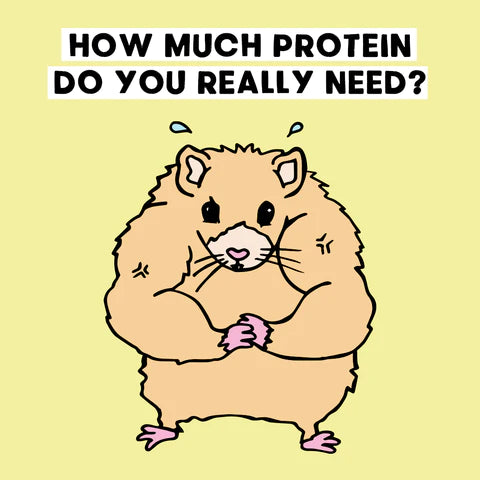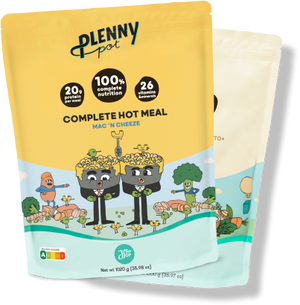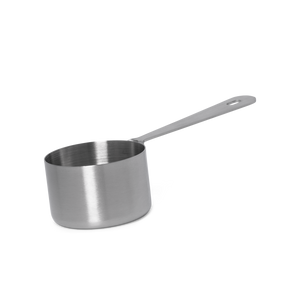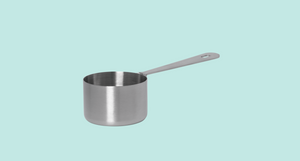Laatste update: 21/03/2023
In dit artikel vertellen we je meer over:
- Het belang van eiwitten.
- De hoeveelheid die nodig is voor een goede gezondheid.
- Goede eiwitbronnen.
- Wat er gebeurt als je te veel eiwitten eet.
- Hoe je misschien kunt profiteren van meer eiwitten.
1. Het belang van eiwitten
Eiwitten zijn essentieel voor een goede gezondheid.
Eiwit is een macronutriënt, samen met vet en koolhydraten. Dit betekent dat je relatief grote hoeveelheden ervan in je dieet nodig hebt voor groei, energie en gezondheid. Eiwit is anders dan de andere macronutriënten omdat het lichaam geen eiwit opslaat en daarom geen reservoir heeft om op terug te vallen wanneer het een nieuwe voorraad nodig heeft. Dit betekent echter niet dat de oplossing is om de hele dag eiwitten te eten, want zodra de je genoeg binnen hebt gehad, wordt de rest gebruikt voor energie of opgeslagen als vet [2].
In het algemeen kan eiwit in elke cel van ons lichaam worden gevonden en is het nodig om spieren op te bouwen, weefsels te herstellen en om haar, bloed, antilichamen, enzymen en meer aan te maken. Ook je nagels – handig om die vervelende stickers van appels af te pellen – bestaan grotendeels uit eiwitten [3]. Wil je meer weten over eiwitten? Lees ons artikel: introductie tot macronutriënten.
2. Dus, hoe meer eiwitten, hoe beter?!
Nee, niet echt. Ons lichaam breekt continu zijn eigen weefsels af, herstelt en bouwt ze weer op. In perioden van ziekte of verhoogde fysieke activiteit is meer eiwit nodig voor herstel. Maar als je meer een Serie-Bingende-Bankhanger bent, dan zal de aanbevolen dagelijkse eiwitinname voor jouw lichaamsgewicht waarschijnlijk voldoende zijn.
Hoeveel eiwitten heb ik nodig?
Volgens de Europese Autoriteit voor Voedselveiligheid (EFSA) is de referentie-inname 0,83 gram eiwit per kilogram lichaamsgewicht per dag.
Maar let op: ook Het het voedingscentrum zegt dat het "[...] vooral informerend bedoeld en is geen leidraad van hoeveel je zou moeten eten."
Dus niet per se de ideale hoeveelheid om elke dag te consumeren [4].
Volgens onderzoek uit 2019, die het verzadigende effect van twee eiwitrijke diëten op getrainde personen tijdens een korte energietekort-periode vergeleek, is 1,8 g/kg/d een goed doel voor veel mensen voor maximale verzadiging [5,6].
Maar “meer eiwit” betekent niet “meer vlees, vis of zuivelproducten eten” [1].
Denk aan soja, volkoren granen, peulvruchten en groenten. Het extra voordeel van deze planten is dat ze minder belastend zijn voor de natuurlijke hulpbronnen, oftewel een duurzamere eiwitalternatief. Wist je bijvoorbeeld dat 91% van de ontbossing wordt veroorzaakt door veehouderij?!
Om je dagelijkse eiwitinname te berekenen, kun je deze online eiwitinnamecalculator gebruiken.

Wat gebeurt er als je te veel eiwitten eet?
Het is mogelijk om te veel eiwitten te eten, maar hoeveel precies te veel is en wat de exacte gevolgen zijn is niet duidelijk en en varieert waarschijnlijk per persoon.
Een studie uit 2016 onderzocht het effect van een eiwitrijk dieet over een periode van een jaar bij gezonde, krachttrainende mannen. Deze studie toonde aan dat het dagelijks eten van ongeveer 1,4 gram per pond lichaamsgewicht (3 gram per kg) gedurende een jaar geen nadelige effecten had op hun gezondheid [8].

Sommige onderzoekers suggereren echter dat te veel eiwit schadelijk kan zijn, vooral voor mensen met nierziekten. Er zijn aanwijzingen dat verhoogde eiwitinname de nieren harder laat werken, en als gevolg daarvan kan het risico op nierstenen verhogen [8,11].
Volgens een wetenschappelijk overzicht gepubliceerd in 2013 kan, wanneer extra eiwitten niet worden opgebruikt door het lichaam, het een metabole belasting kan vormen voor de botten, nieren en lever. Daarom kan het ook misselijkheid, krampen, hoofdpijn, vermoeidheid en een opgeblazen gevoel veroorzaken bij gezonde mensen [12]. Toch is verder onderzoek nodig om definitieve conclusies te trekken.
Kan ik profiteren van meer eiwitten?
Vraag jezel: Ben ik een atleet? Herstel ik van een blessure of operatie? Ben ik 60 jaar of ouder? Is het antwoord op al deze vragen ‘nee’? Dan heb je waarschijnlijk geen extra eiwitten nodig. Antwoordde je ‘ja’ op sommige vragen? Lees dan verder!
Atleten
Als je bijvoorbeeld in een anabole staat bent of spiermassa opbouwt, zoals een duursporter die 6 dagen per week traint voor een marathon, kunnen extra eiwitten je net dat beetje extra geven om spieren te herstellen en op te bouwen. Atleten gebruiken eiwitten voornamelijk om spieren te herstellen en opnieuw op te bouwen die worden afgebroken tijdens het sporten. Eiwit helpt ook om koolhydraten in de vorm van glycogeen op te slaan. Het kan atleten het voordeel geven dat ze sneller herstellen [13].
De Academy of Nutrition and Dietetics, Dietitians of Canada en het American College of Sports Medicine hebben gezamenlijk een standpunt ingenomen over de eiwitbehoeften van atleten. Over het algemeen raden ze aan dat atleten 1,2 tot 2,0 gram eiwit per kilogram lichaamsgewicht per dag consumeren. Deze totale eiwitbehoefte wordt het beste bereikt door na belangrijke trainingssessies 0,3 gram eiwit per kg lichaamsgewicht te consumeren en elke 3 tot 5 uur over meerdere maaltijden [14,15].
Ook beveelt de International Society of Sports Nutrition (ISSN) aan dat personen die regelmatig sporten minimaal 1,4 tot 2,0 gram eiwit per kilogram per dag consumeren [16].
Als je matig sport, zoals 150 minuten per week zoals aanbevolen door de Centers for Disease Control and Prevention – of als je helemaal niet sport (no judgement hoor) – ben je waarschijnlijk geen atleet [14].
Oudere mensen en personen die herstellen van een blessure
Volgens Kathryn Starr, een expert op het gebied van veroudering aan de Duke University School of Medicine, beginnen de spieren rond de leeftijd van 60 ernstig achteruit te gaan. Naarmate we ouder worden, vermindert ook het vermogen van het lichaam om eiwitten af te breken, daarom neemt de eiwitbehoefte van ouderen toe [10,18].
De European Society for Parenteral and Enteral Nutrition (ESPEN) beveelt 1 gram per kilogram lichaamsgewicht per dag aan voor ouderen, maar dit moet gepaard gaan met extra fysieke activiteit om effectief te zijn [19].
Tijdens een chirurgische ingreep of in geval van een blessure kunnen je spieren worden beschadigd. In dit geval kan je lichaam baat hebben bij extra eiwitten, omdat de aminozuren in eiwitten spierschade herstellen door weefsel te regenereren en de wondgenezing te versnellen [20].
4. Wat zijn goede eiwitbronnen?
Goede plantaardige eiwitbronnen [21]:
Product |
Eiwitten per 100g |
|
Zwarte bonen (gekookt) |
9g |
|
Linzen (gekookt) |
9g |
|
Seitan |
38g |
|
Lijnzaad |
18g |
|
Amandelen |
21g |
|
Sojabonen (gekookt) |
13g |
|
Hempzaden |
32g |
|
Tempeh |
19g |
5. Eiwitten en Jimmy joy
Al onze Plenny maaltijden bevatten minimaal 20 gram eiwit en alle negen essentiële aminozuren die je lichaam nodig heeft.
Plenny Shake Active heeft zelfs 35 gram plantaardig eiwit per maaltijd van 400 kcal.
We gebruiken verschillende uitwitbronnen — allemaal plantaardig — zoals soja, erwten, lijnzaad en haver.
Soja op zich zou al meer dan genoeg eiwitten leveren, maar we hebben ook andere ingrediënten toegevoegd om de diversiteit te vergroten.
Tot slot...
Dus als je het gevoel hebt dat je meer eiwitten nodig hebt, kijk dan nog eens naar de vragen die je jezelf kunt stellen.
Voor de meeste mensen is er geen reden om je zorgen.
Als je een gevarieerd dieet volgt, zou je eiwitinname in een veilige en gezonde marge moeten zitten [22].
BRONNEN
- Harvard Health Publishing Staff (2022). How much protein do you really need? From: https://www.health.harvard.edu/blog/how-much-protein-do-you-need-every-day-201506188096
- K. Wempen (2022). Are you getting too much protein? From: https://www.mayoclinichealthsystem.org/hometown-health/speaking-of-health/are-you-getting-too-much-protein
- M. Lonnie et al. (2018). Protein for Life: Review of Optimal Protein Intake, Sustainable Dietary Sources and the Effect on Appetite in Ageing Adults. From: https://www.ncbi.nlm.nih.gov/pmc/articles/PMC5872778/
- EFSA (2012). Scientific Opinion on Dietary Reference Values for protein. From: https://efsa.onlinelibrary.wiley.com/doi/abs/10.2903/j.efsa.2012.2557
- J. Roberts et al. (2019). Satiating Effect of High Protein Diets on Resistance-Trained Individuals in Energy Deficit. From: https://www.mdpi.com/2072-6643/11/1/56/htm
- M. Helselmans (2019). How much protein do you need for maximum satiety? [Study review] From: https://mennohenselmans.com/protein-satiety-study/
- S. Margulis. (2003). Causes of Deforestation of the Brazilian Amazon. From: https://openknowledge.worldbank.org/bitstream/handle/10986/15060/277150PAPER0wbwp0no1022.pdf?sequence=1
- J. Antonio et al. (2016). A High Protein Diet Has No Harmful Effects: A One-Year Crossover Study in Resistance-Trained Males. From: https://pubmed.ncbi.nlm.nih.gov/27807480/
- C. Peacock et al. (2014) The effects of consuming a high protein diet (4.4 g/kg/d) on body composition in resistance-trained individuals. From: https://pubmed.ncbi.nlm.nih.gov/24834017/
- P. Neighmond (2018). How Much Protein Do You Really Need? From: https://www.npr.org/sections/thesalt/2018/12/03/669808699/how-much-protein-do-you-really-need?t=1593420997897&t=1595233339580
- A. Levey et al. (1996). Effects of dietary protein restriction on the progression of advanced renal disease in the Modification of Diet in Renal Disease Study. From: https://pubmed.ncbi.nlm.nih.gov/8629624/
- I. Delimaris (2013). Adverse Effects Associated with Protein Intake above the Recommended Dietary Allowance for Adults. From: https://www.ncbi.nlm.nih.gov/pmc/articles/PMC4045293/
- S. Philips and L. Van Loon (2011). Dietary protein for athletes: from requirements to optimum adaptation. From: https://pubmed.ncbi.nlm.nih.gov/22150425/
- Dietitians of Canada (2016). Nutrition and Athletic Performance. From: https://www.dietitians.ca/DietitiansOfCanada/media/Documents/Resources/noap-position-paper.pdf?ext=.pdf
- ACSM (2018). Nutrition for Exercise Science. From: https://www.acsm.org/docs/default-source/publications-files/acsm-nutrition-download-chapter-3-excerpt.pdf?sfvrsn=deb0b173_0
- R. Jäger et al. (2017). International Society of Sports Nutrition Position Stand: protein and exercise. From: https://jissn.biomedcentral.com/articles/10.1186/s12970-017-0177-8
[17] Centers for Disease Control and Prevention (2023). How much physical activity do older adults need? From: https://www.cdc.gov/physicalactivity/basics/older_adults/index.htm
- J. Baum et al. (2016). Protein Consumption and the Elderly: What Is the Optimal Level of Intake? From: https://pubmed.ncbi.nlm.nih.gov/27338461/
- P. Singer et al. (2019). ESPEN guideline on clinical nutrition in the intensive care unit. From: https://www.sciencedirect.com/science/article/abs/pii/S0261561418324324
- K. Tipton (2015). Nutritional Support for Exercise-Induced Injuries. From: https://www.ncbi.nlm.nih.gov/pmc/articles/PMC4672013/
- A. Denmon and L. James. (2021). Plant-Based Diet. From: https://extension.psu.edu/plant-based-diet
- R. Wolfe et al. (2017). Optimizing Protein Intake in Adults: Interpretation and Application of the Recommended Dietary Allowance Compared with the Acceptable Macronutrient Distribution Range. From: https://academic.oup.com/advances/article/8/2/266/4558082

 Alles wat je nodig hebt in één maaltijd
Alles wat je nodig hebt in één maaltijd
 Zit vol voor 3-5 uur
Zit vol voor 3-5 uur




















 Toegevoegd aan winkelwagen
Toegevoegd aan winkelwagen






















